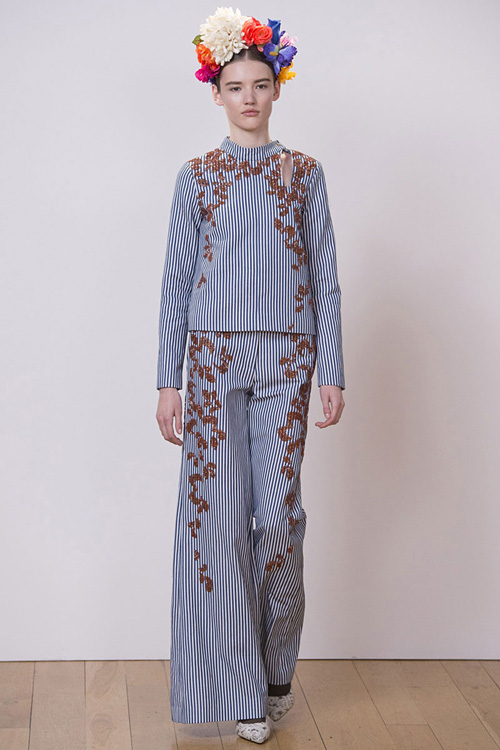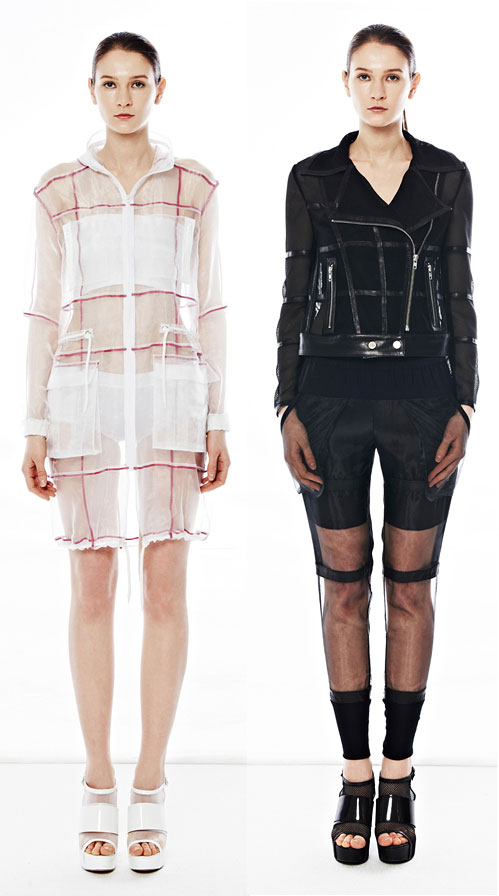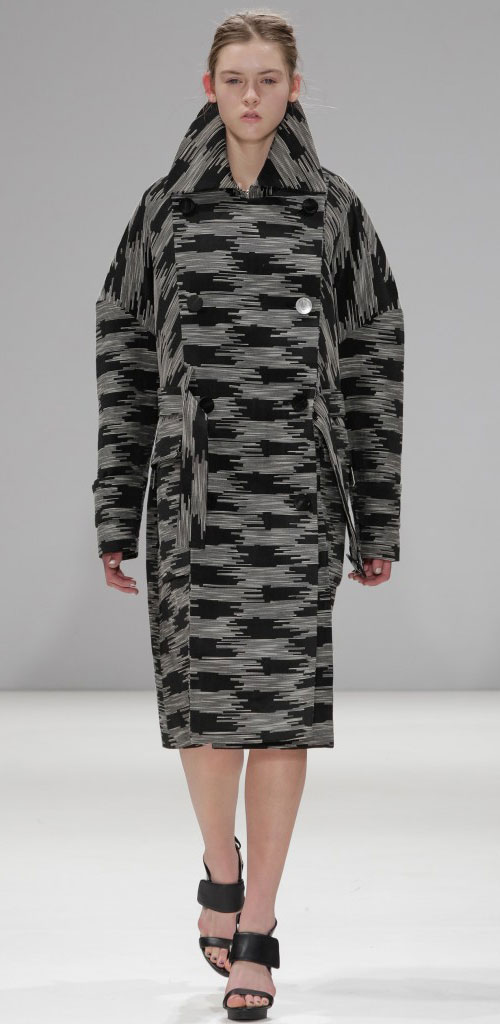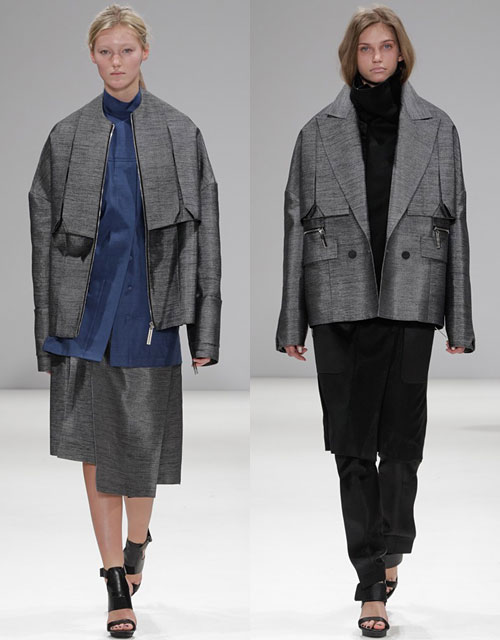
Runway photography: Carla Guler
“For AW13 I wanted to continue to explore the idea of protection that emerged in my AW12 Terra Nova collection which was inspired by Captain Scott’s final, fateful expedition to Antarctica. But for AW13, I wanted to inject a sense of romanticism and nostalgia and explore something more overtly feminine. 
My starting point for the collection was Russia and the strong, dignified and proud women who kept their families together during the Russian revolution. For many it meant leaving everything behind and travelling across the ocean to America to give their children a better life. They brought with them their culture and customs and my AW13 collection re-imagines their traditional dress in a contemporary way.”
Born in Korea, Eudon Choi initially trained as a menswear designer in Seoul, acquiring an in-depth knowledge of tailoring techniques and a great eye for detail. He moved to London to attend the Royal College of Art’s MA in womenswear. Eudon worked as a womenswear designer for a few years before setting up his eponymous label in 2009. Eudon won the LYCRA®Style Emerging Talent Award at the WGSN Global Fashion Awards in New York in 2011 and debuted at LFW in February 2012 with his ‘Terra Nova’ collection.














